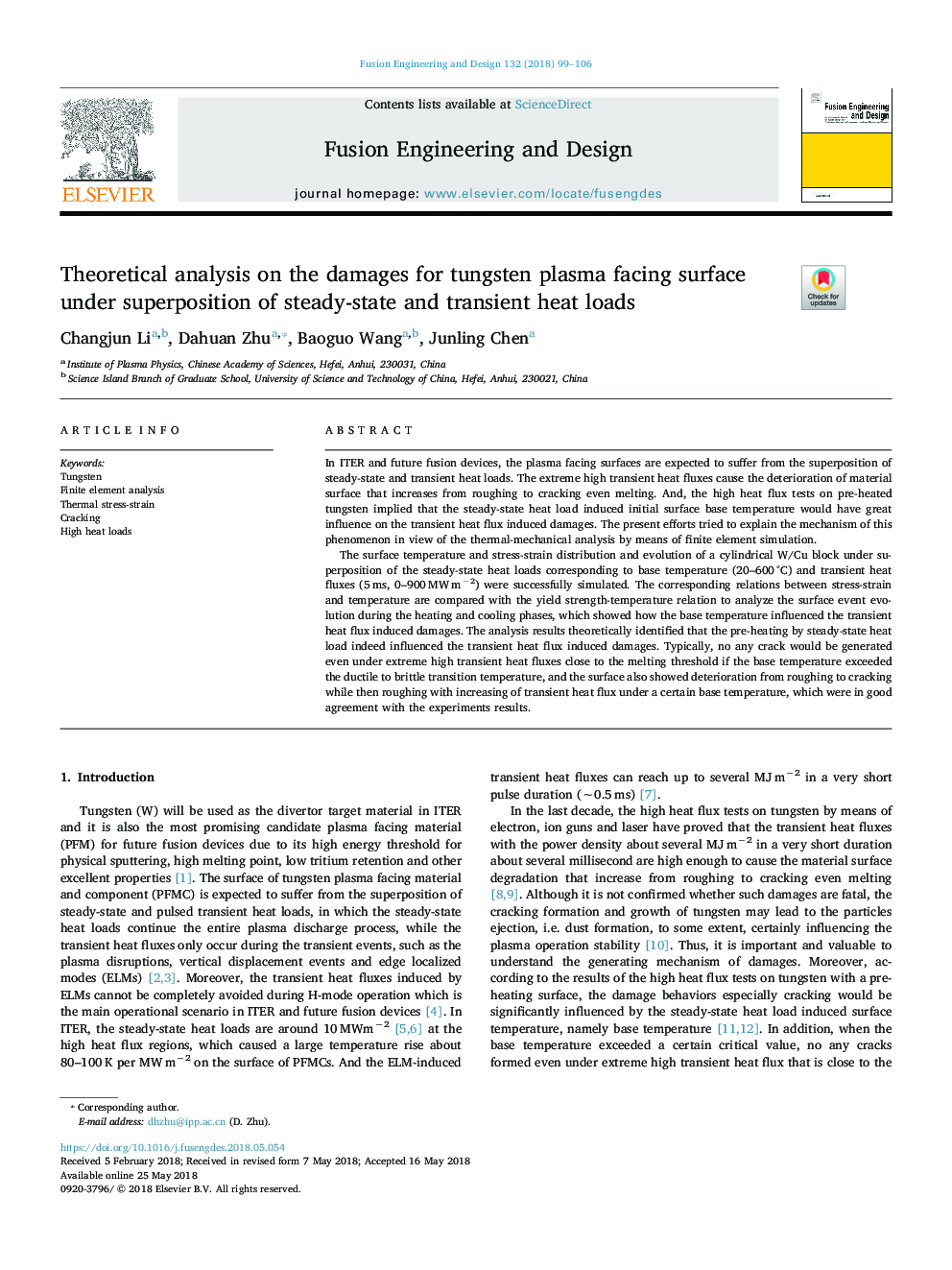| Article ID | Journal | Published Year | Pages | File Type |
|---|---|---|---|---|
| 6742883 | Fusion Engineering and Design | 2018 | 8 Pages |
Abstract
The surface temperature and stress-strain distribution and evolution of a cylindrical W/Cu block under superposition of the steady-state heat loads corresponding to base temperature (20-600â¯Â°C) and transient heat fluxes (5â¯ms, 0-900â¯MWâ¯mâ2) were successfully simulated. The corresponding relations between stress-strain and temperature are compared with the yield strength-temperature relation to analyze the surface event evolution during the heating and cooling phases, which showed how the base temperature influenced the transient heat flux induced damages. The analysis results theoretically identified that the pre-heating by steady-state heat load indeed influenced the transient heat flux induced damages. Typically, no any crack would be generated even under extreme high transient heat fluxes close to the melting threshold if the base temperature exceeded the ductile to brittle transition temperature, and the surface also showed deterioration from roughing to cracking while then roughing with increasing of transient heat flux under a certain base temperature, which were in good agreement with the experiments results.
Related Topics
Physical Sciences and Engineering
Energy
Energy Engineering and Power Technology
Authors
Changjun Li, Dahuan Zhu, Baoguo Wang, Junling Chen,
